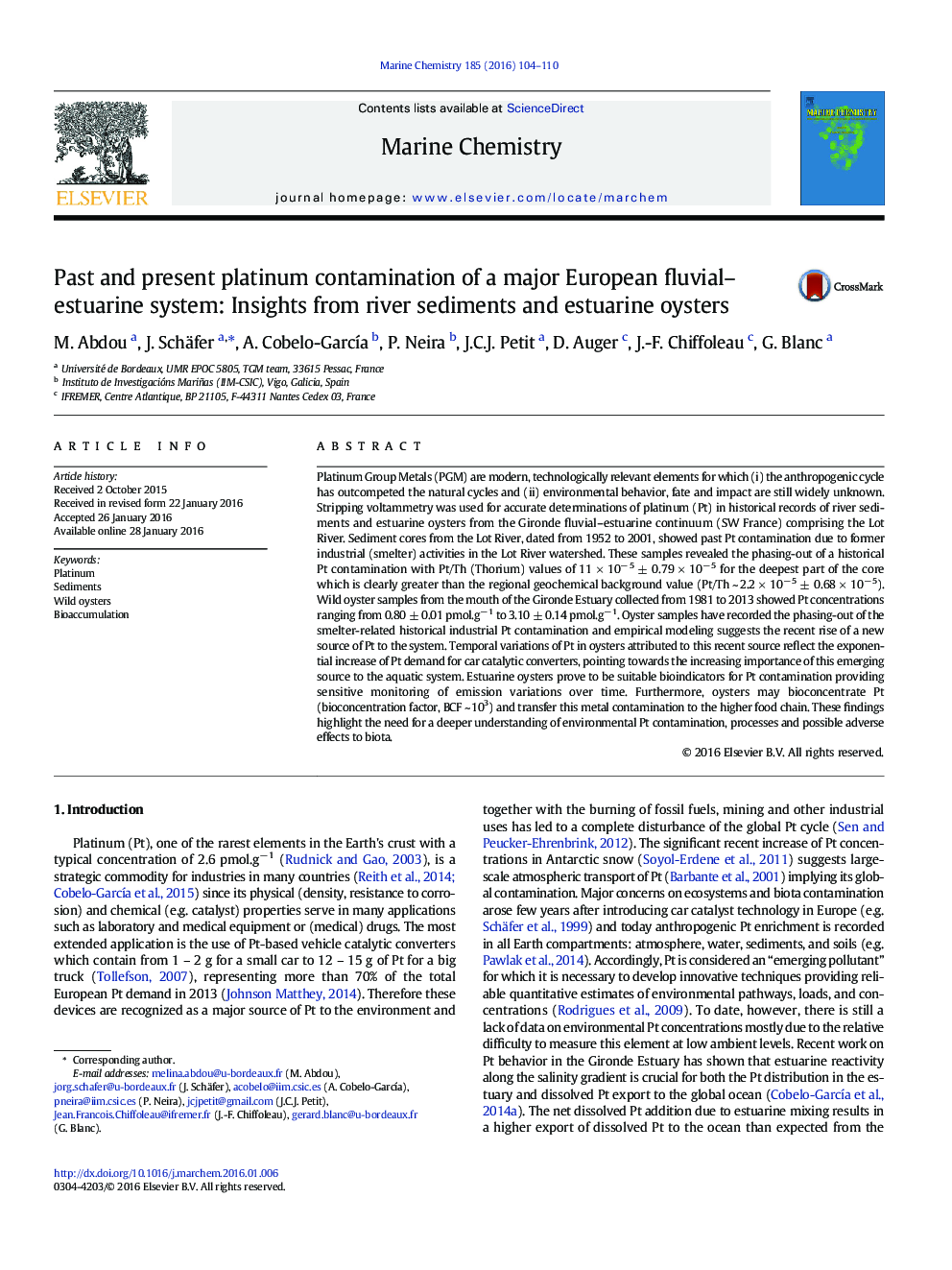| کد مقاله | کد نشریه | سال انتشار | مقاله انگلیسی | نسخه تمام متن |
|---|---|---|---|---|
| 1263150 | 1496651 | 2016 | 7 صفحه PDF | دانلود رایگان |
• Historical Pt records reflect past and present anthropogenic sources.
• Wild oysters are sensitive biomonitors of Pt contamination that bioconcentrate Pt.
• Anthropogenic Pt emissions may profoundly affect Pt budget of the watershed.
Platinum Group Metals (PGM) are modern, technologically relevant elements for which (i) the anthropogenic cycle has outcompeted the natural cycles and (ii) environmental behavior, fate and impact are still widely unknown. Stripping voltammetry was used for accurate determinations of platinum (Pt) in historical records of river sediments and estuarine oysters from the Gironde fluvial–estuarine continuum (SW France) comprising the Lot River. Sediment cores from the Lot River, dated from 1952 to 2001, showed past Pt contamination due to former industrial (smelter) activities in the Lot River watershed. These samples revealed the phasing-out of a historical Pt contamination with Pt/Th (Thorium) values of 11 × 10− 5 ± 0.79 × 10− 5 for the deepest part of the core which is clearly greater than the regional geochemical background value (Pt/Th ~ 2.2 × 10− 5 ± 0.68 × 10− 5). Wild oyster samples from the mouth of the Gironde Estuary collected from 1981 to 2013 showed Pt concentrations ranging from 0.80 ± 0.01 pmol.g− 1 to 3.10 ± 0.14 pmol.g− 1. Oyster samples have recorded the phasing-out of the smelter-related historical industrial Pt contamination and empirical modeling suggests the recent rise of a new source of Pt to the system. Temporal variations of Pt in oysters attributed to this recent source reflect the exponential increase of Pt demand for car catalytic converters, pointing towards the increasing importance of this emerging source to the aquatic system. Estuarine oysters prove to be suitable bioindicators for Pt contamination providing sensitive monitoring of emission variations over time. Furthermore, oysters may bioconcentrate Pt (bioconcentration factor, BCF ~ 103) and transfer this metal contamination to the higher food chain. These findings highlight the need for a deeper understanding of environmental Pt contamination, processes and possible adverse effects to biota.
Figure optionsDownload as PowerPoint slide
Journal: Marine Chemistry - Volume 185, 20 October 2016, Pages 104–110
